John Hurrell – 6 March, 2014
Loss therefore is the dominant theme of Efterord, the mourning for promotional words now gone, flickering films (Inner Light), and texts (Never Trust…, Absent Stories, Värnamo Nyheter) all absent or covered over. In short a distant past rapidly receding.
In shrewd co-ordination with the recent switching on of Swedish artist David Svensson’s new public commission, Eyelight Lane - a zigzagging, traversing red neon line in Fort Lane - Starkwhite presents in three of its upstairs galleries a more chromatically subtle show by the same artist, Efterord (Afterword).
Downtown, Eyelight Lane is at first floor level, a restless and hot persimmon line that skips around window ledges, balconies and pipes, occasionally bobbing up and down to different heights, crossing the width of the lane to eventually return, and paralleling the length of the street: running the thickness of a city block, and illuminating all brickwork in close proximity. Glowing in both day and night, it brings life to a small inner-city lane hitherto seen as possibly a little dowdy and unnoticeable.
Up the hill on K’Rd, Efterord is more about traces resulting from light, illumination’s obliteration and the removal of sources of radiation - rather than (overtly) demonstrating light itself. Svensson presents five works.
In the room at the top of the stairs we find Inner Light (Absent Image), a wall arrangement of six overlapping (old fashioned) film projector screens. This continues the linear preoccupation of Eyelight Lane, except instead of joining up red lines they are black and dark grey, horizontal sleeves that contain wooden rollers and black frames sometimes on the vertical edges. The screen centres are empty: some vaguely yellowy, others more blue. It is a long time since they have been used.
In the lefthand room overlooking Karangahape Road Absent Stories repeats the emptying out of centres, but with book pages - not screens - lined up in seven stacked rows. The much smaller (and very old) paper pages (132 of them, of varying size) are yellowing on the edges, and a faint type-faced text is barely detectable. Just enough so you can tell that each page is inverted. Meaning (via writing) has been bleached out by natural light.
On a wall adjacent to Inner Light is Never Trust the Teller, Trust the Tale, a small glossy black metal sheet that looks like an open (very thin) black book that can never ever be deciphered. Related in motivation - and back in the front room - we see on a wall adjacent to Absent Stories, Värnamo Nyheter, the back page of a Swedish newspaper. The original page is in colour but printed over the top is the entire text of that edition, blocking out any possibility of retrievable reading.
In the middle (but darkened) third room, is Svensson’s fifth work, Efterord, a series of fifty projected black and white slides of the dilapidated remnants of advertising signs of neon or fluorescents. The main (readable) front transparency or tubular lettering has usually disappeared, leaving the support framework and occasionally, a bulb or two. These destroyed advertisements are symbols of lost prosperity, portents of the demise of late capitalism.
Sometimes these battered skeletal structures are on rooftops, other times they are tragically on the ground amongst the weeds, overgrown by creepers. These elegant and varied images are in the Becher tradition, with added melancholia. Svensson has also made this series into a small book.
Loss therefore is the dominant theme of Efterord, the mourning for promotional words now gone, flickering films (Inner Light), and texts (Never Trust…, Absent Stories, Värnamo Nyheter) all absent or covered over. In short a distant past rapidly receding.
Eyelight Lane in contrast celebrates the present and particular: the contours of the lane, the experienced walked-between walls, the height of the buildings, the spacing between doorways, the trajectory from Shortland to Fort Street: Part tangential and part direct it focuses on the pedestrian experience - studying the work’s intricate indentations and changing angles above through an accompanying (appreciative) body in motion below.
John Hurrell
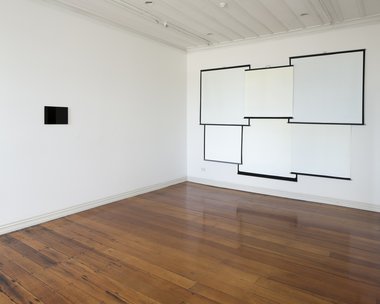
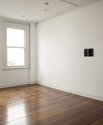
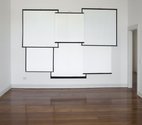
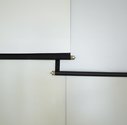


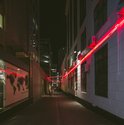
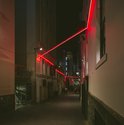

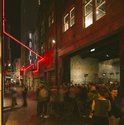
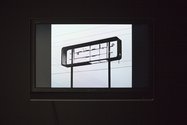
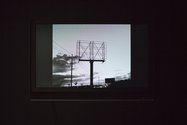
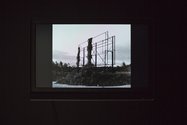
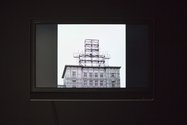
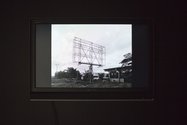
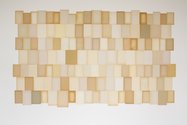

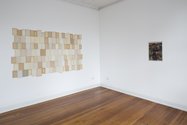
 Two Rooms presents a program of residencies and projects
Two Rooms presents a program of residencies and projects Advertising in this column
Advertising in this column



This Discussion has 1 comment.
Comment
Connie Blue, 12:40 p.m. 7 March, 2014 #
I love Eyelight Lane. Top work!
Participate
Register to Participate.
Sign in
Sign in to an existing account.